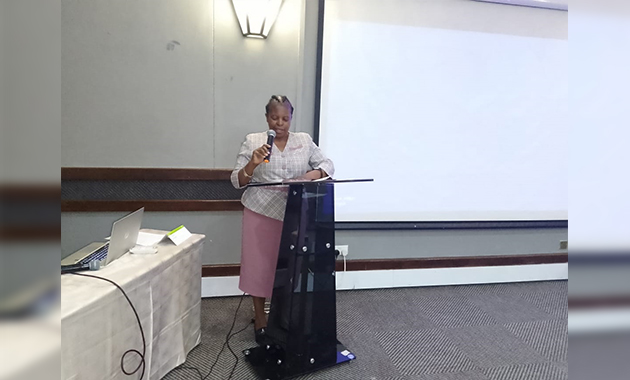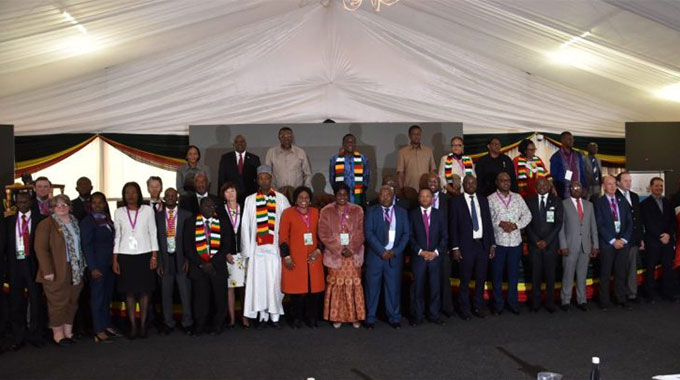A picture that told a thousand words

news having been out of the country for much of last week. I come to page 6 of the Saturday Herald, April 9 2011. A familiar picture hits my face. My heart skips a beat. It is the picture of the then Prime Minister of the newly independent Zimbabwe, 31 years ago. He is stranding elegantly on a wooden mat hoisted by four young boys. But only the faces of three of those boys are visible. It is a familiar picture. Very familiar. The headline to the story accompanying the picture goes: “President Mugabe, a unique brand of statesmanship.”
I read that the picture had been doing the rounds on Facebook. I am not a Facebook fan so I probably would never have seen the picture had the Herald not published it.
I knew about the picture when David Smith published his book many years ago. I was there when the picture was taken. I was in the picture! Not as one of the pole bearers. But as part of the multitude of the school boys at St Francis Xavier College aka Marist Brothers Kutama and villagers from the surrounding kraals of Kutama, Dambaza, Masuwa, Masiyarwa and Chikambi in Zvimba. I was 17 years old then and completing O-Levels at the school. There were no A-Levels then. Prime Minister Robert Mugabe was visiting his rural home, a stone throw away from the school. With its numerous football grounds the school was the only logical landing place for the convoy of military helicopters and ground vehicles accompanying an illustrious son of the soil coming back to his rural home after so many years in the struggle. It was a momentous occasion not to be missed by anyone given the opportunity.
I then read the story by one Albert Mutasa, this name apparently a pseudonym. It is an excellent piece. The guy is certainly a storyteller in the mould of one of my favourite writers, Alexander Kanengoni. I am still trying to figure out who this Albert Mutasa is. It is a pity he writes under a pseudonym. But if he was at Kutama College from 1978 to 1981 then he couldn’t have been one of the pole bearers as claimed. I know all the pole bearers. They were all my friends. They were all in the same stream with me. Different classes, but in the same stream. Walter Chidakwa, now Deputy Minister of Trade, was also with us. Brother Joseph who designed the wooden platform for the Prime Minister to step on was truly eccentric as Albert Mutasa puts it. Brother Joseph was our Physical Science teacher.
The honour of carrying the Prime Minister was reserved for the prefects only. They were all in form four. It is not a secret who those boys were. It is all public knowledge. There were four houses at Kutama College, all named after some of the Marist Brothers, a sect of the Jesuit Priests from Canada who had founded the school in about 1927.
The houses were Champagnat (pronounced “Sha-mpay-nya”) whose colours were blue; Chichester, whose colours were maroon, Michael whose colours were green and Patrick whose colours were yellow.
The faces of three of the pall bearers visible in the picture are that of Fidelis Mache, the prefect from Chichester House, Joseph Ginya, the prefect from Michael House (he is now deceased), Erasmus Mujiwa, the prefect from Champagnat House. Cropped out of the picture is my best friend, now my nephew’s father-in-law (and therefore mine too!). His name is Alwyn Hamudi-kuwanda Makoni. He was the school captain or head boy. I can’t now remember who the prefect for Michael House was at the time.
Albert Mutasa’s piece is brilliant. He certainly has more recollection of the events. The Prime Minister’s close security was at first apprehensive and reluctant to risk their boss on a ramshackle and seemingly insecure platform by the eccentric Brother Joseph. “Vafana mukadonedza Shef tinokurovai zvamusati mamboitwa” (Young boys, we will beat the daylights out of you if you drop the boss), one of them had threatened.
But Brother Joseph lived in a world of his own. He paid no attention. To our surprise, the Prime Minister ignored his close security and stepped onto the mat. We watched with bated breath as the prefects bent down, effortlessly lifted up the rudimentary carriage and gracefully paced up to the main administration block.
All of them were excellent athletes who had broken one record or other in several provincial championships for the Mashonaland West Province. Fidelis Mache was a long distance runner and a backstroke specialist. Joseph Ginya was a sprinter and middle distance runner. So was Erasmus Mujiwa. Alwn Makoni and I broke the Under 19 boys javelin record at the then Cam and Motor Stadium in Gatooma in 1980. He also broke the shot putt record. I suspect the prefect for Patrick House who is not in the picture was one Gilson Zivanayi, an excellent sprinter who was later to head a school in Mount Darwin.
Albert Mutasa must have been in form three then. His contemporaries would have been Stanley Chirambadare (“Samora”) who later became a household name at Dynamos Football Club. Albert would also have been in the same stream with Zachary Wazara of Econet Wireless.
Back to the picture: at the main admin block the Prime Minister had a meeting with the teaching staff then headed by Mr N Chirau whose deputy was Mr Muringi (“Squeeze Baba”).
Some of the teachers in those days included Mr Nyaho, Mr Mutubuki and Mr T K Tsodzo whose short play “Baba Munini Francis” which he wrote during that time was immortalised by the now defunct “Bhundu Boys” in a song by the same name.
The other teachers included Mr Bwayla; Mr Choga whose son is the current Deputy Head at the school; Brother Superior Emmanuel, nicknamed “Manyoka” because he was a snake charmer; Mr Mawoza, nicknamed “Mwata Yamvo” because he had introduced to us the history of some Central African Chief by that name. There was also old man Tazvishaya (“Tezvi”) whose son was an icon in the liberation struggle; Mr Benza the Maths teacher whose favourite saying was “A graph is a picture, are we together?” Mr Zigomo, Mr Sigobodhla, and Mr Mwandiyambira were also there.
Brother Morel was the photographer. Kutama College had an excellent tradition. All those who completed their teacher training diploma when it was still a college or had done ‘O’ levels at the school would have little passport size photos of them displayed in large picture frames which would be propped up on the outside walls of the main classrooms. Mine is still there.
Albert Mutasa recalls the incident when the school was closed in 1979. It was a very sad development. The closure was triggered by an incident in which a brilliant but young science teacher, Mr Hillary Mukumba, lost his sight. This followed an attack by armed men.
As school kids it was never explained to us what exactly had happened. The version that carried the day was that some ZIPRA combatants invading from the Makonde area had lain in ambush for the late James Chikerema who was rumoured to have come visiting his rural home in nearby Dambaza Village.
Unfortunately the armed men ended up shooting at the motor vehicles ferrying our teachers to Salisbury. It was a month-end and therefore pay time. Several other teachers were injured.
Thank you Herald. Thank you Albert Mutasa. The picture and the article have been an opportunity for the African Teacher to reminisce over bygone days!







Comments